What Are ACEs?
WHAT ARE ACEs?
ACEs Fundamentals
ACEs stands for adverse childhood experiences that an individual endured before the age of 18. These can include abuse, neglect, and dysfunctions within the family.
Some ACEs research also looks at other types of adversity, like violence in the community, being unhoused or poor, facing racism, and being bullied. Research shows that these experiences can influence a person’s health, well-being, and happiness throughout their life.
THE IMPACTS OF ACEsACEs Questionnaire
Researchers use something called an ACE Questionnaire, a 10-item questionnaire that gathers information about adverse experiences people had when they were kids and teens.
THESE EXPERIENCES FALL INTO 3 CATEGORIES:
This could be physical, emotional, or sexual.
This could be physical or emotional.
This could be parental mental illness, an imprisoned relative, witnessing domestic violence, household substance abuse, or parental divorce or separation.

By counting the number of these experiences someone endured before they turned 18, you get their ACE score.
This ACE score helps researchers and practitioners understand how these experiences might affect a person’s health later in life.
High ACE scores, especially without positive experiences or support from adults, can trigger what is called “toxic stress” in children.

Toxic stress can overload the body’s stress system, making it challenging for individuals, especially children, to cope and handle difficult situations.
ACEs are not limited to certain groups; they can happen to anyone, no matter their background. And they don’t just affect individuals – they impact families, communities, and even society as a whole. ACEs also present a challenge to governments, who must develop policies designed to meet the needs of individuals grappling with the aftermath of ACEs.
Not everyone responds to ACEs in the same way. Protective factors, such as having supportive adult figures, can play a pivotal role in reducing the impact of ACEs. So, while ACEs offer insight into potential health outcomes at the population level, they do not always determine an individual’s health trajectory. With the right help and support, and the availability of effective interventions, the impact of ACEs can be overcome, even for those with high ACE scores.
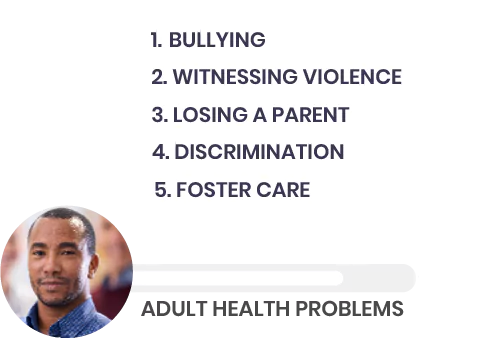
Since the first ACE study in 1998, researchers have been digging deeper into other types of adversity people experience. They found that beyond the original 10 categories in the ACE Questionnaire, many other difficult experiences can impact a person’s health later on.
These include things like bullying, witnessing violence in the community, losing a parent, facing discrimination, and being involved with foster care. Research shows that these experiences, just like the ones in the ACE Questionnaire, can lead to health problems in adults.
ACEs Categories
When we talk about these experiences, we divide them into three main categories: adverse childhood experiences, adverse community experiences, and adverse climate-related environmental experiences, like climate change and natural disasters.
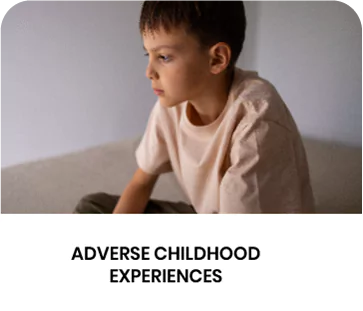
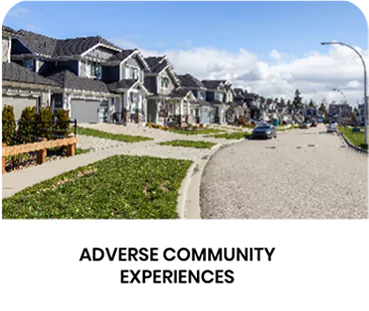
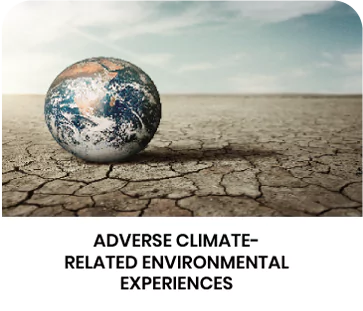
This comprehensive understanding sheds light on how systemic inequalities prevent individuals and communities from thriving.
It also brings attention to how different groups of people may be exposed to and affected by ACEs.
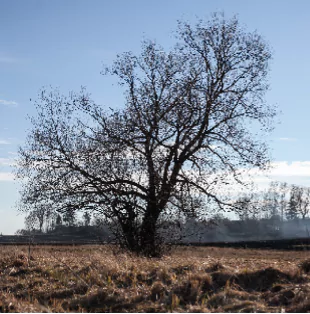
An analogy for ACEs
Consider the analogy of a tree rooted in unhealthy soil. A person entrenched in systemic issues is robbed of the necessary support for growth and resilience. The leaves on the tree, which reveal the overall health of the tree, symbolize the “symptoms” of ACEs, evident to both the individual and professionals across health, education, and social service sectors.
Yet, like a tree thriving in fertile soil, the impacts of ACEs on individuals can be mitigated with the aid of familial, societal, and professional support systems.
Through targeted interventions and resilience-building strategies, individuals can lead healthier lives, despite what they’ve been through.

